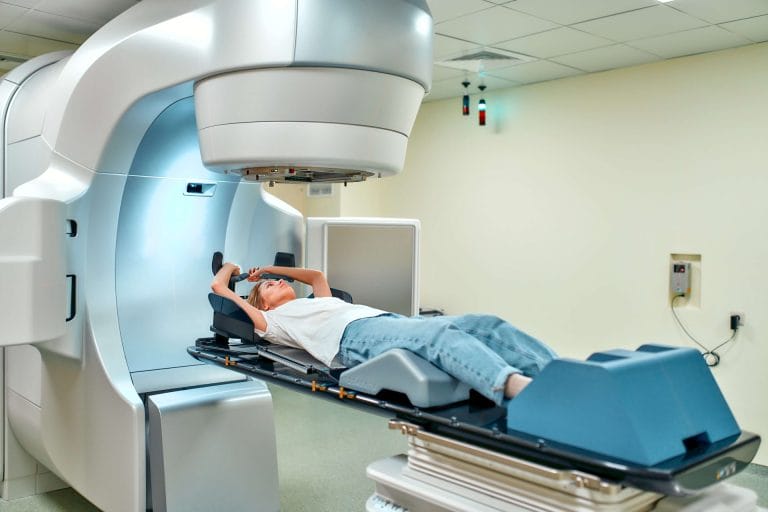
With about 30 million Americans suffering from chronic obstructive pulmonary disease (COPD), many across the nation may be wondering what is the best treatment for COPD. While different treatment techniques may be better suited for different patients, there are general lifestyle changes that can help anyone with COPD breathe a little more easily.
To help answer the question of how to manage COPD, this article will discuss what COPD is, what some common COPD symptoms are, and how those symptoms can be managed in practical ways. Keep reading to learn more about controlling your stable COPD.
Explore Cardiopulmonary Rehabilitation Offered by PAM Health
What Is COPD?
COPD is a group of progressive lung diseases that affects the ability to breathe. The most common lung diseases associated with COPD are emphysema and chronic bronchitis. Emphysema negatively impacts outward airflow by gradually destroying the lung’s air sacs, while bronchitis causes inflammation and narrowing of the bronchial tubes, which results in mucus buildup.
COPD can develop over many years of exposure to and inhalation of pollutants, particularly from tobacco smoking and second-hand smoke, as well as chemical irritants and dust in work environments. According to the COPD Foundation, smoking is the top cause of COPD in the United States. COPD can be definitively diagnosed through tests on imaging, blood and lung function.
Although there is no cure for COPD, certain treatments can help reduce symptoms, improve the patient’s quality of life and lower the chance of complications. Because it is a progressive disease, COPD is best treated as early as possible. When left untreated, COPD can quickly worsen and cause heart problems or respiratory infections.
Fortunately, various treatment measures are available to assist in managing COPD. The most common forms of COPD treatment include medications, supplemental oxygen therapy and sometimes surgery. In addition, there are plenty of practical lifestyle modifications COPD patients can make to minimize their symptoms, which we will discuss further in a later section.
Common COPD Symptoms
Overall, COPD makes it more difficult to breathe. At first, COPD symptoms may be quite mild, such as occasional coughing and shortness of breath, but as the disease progresses, these side effects may become nearly constant and inhibit the patient’s ability to breathe normally. The early, mild symptoms of COPD may be often overlooked as a cold, but it is important to be aware of the signs.
Here are the early indications of COPD:
- Mild but recurring cough
- Shortness of breath, especially after exercising
- Frequent need to clear the throat, especially in the morning
These symptoms might be subtle and easy to evade by avoiding stairs or physical activity, but later COPD symptoms will not be so easy to ignore. As COPD progresses, side effects may start to include:
- Lack of energy
- Chest tightness
- Chronic cough, with or without mucus
- Daily need to clear mucus from the lungs
- Wheezing, especially when exhaling
- Frequent colds, flu or types of respiratory infection
Once COPD worsens even further, these symptoms may begin to appear:
- Fatigue
- Weight loss
- Swollen feet, ankles or legs
Be sure to seek immediate medical attention if any of the following symptoms are experienced:
- Bluish or gray lips or fingernails, which is a sign of low oxygen levels in the blood
- Feeling faint, muddled or confused
- Difficulty talking or catching a breath
- Racing heart
6 Tips for Managing Stable COPD
For those with stable COPD (i.e., not experiencing a flare-up of the condition), there are ways to keep symptoms to a minimum and maintain a regular lifestyle. While these strategies will not cure COPD, they will reduce some symptoms and make the condition more manageable. To help alleviate some side effects of your stable COPD, try these six tips:
1. Quit Smoking and Avoid Other Lung Irritants
Because smoking is so detrimental to the lungs, it can severely exacerbate COPD symptoms. It is recommended that smokers who are diagnosed with COPD should quit immediately. COPD patients who do not smoke should do their best to avoid secondhand smoke and chemical fumes whenever possible. Additionally, keeping tabs on air quality can help COPD patients avoid triggers when pollution or particulate matter in the air outside is at high levels.
2. Maintain a Healthy
Giving your body the nutrition it needs is key for fighting off any disease. A diet with plenty of whole, nutrient-dense foods is key to managing COPD. Although COPD symptoms can sometimes make eating more difficult, it’s important to find solutions to maintain a healthy diet. Get on the right track by speaking with a doctor or dietitian about creating a healthy eating plan specifically designed for COPD patients and immune support.
Additionally, COPD patients should stay up-to-date with regular doctors’ visits and vaccines to prevent illness, which can trigger COPD flare-ups.
3. Create an Exercise Plan
Although shortness of breath may make avoiding exercise tempting, it is important for COPD patients to exercise regularly, as doing so can help lessen symptoms of fatigue. Research has also found that exercise therapy may help reduce the effects of dyspnea, which is the breathing discomfort caused by shortness of breath that many COPD patients experience.
Coming up with an exercise plan for someone with COPD involves incorporating the right amount of physical activity without irritating symptoms, which can be a difficult balance to achieve. If you have stable COPD, talk with a doctor about what the right exercise plan for you would look like.
4. Reduce Stress
Stress can have a range of negative effects on overall health, including making COPD symptoms worse. Consider getting some stress relief by talking with others who understand what you are going through. Joining a support group for COPD patients can be a great way to get advice for living with COPD while taking care of your mental health.
5. Conserve Energy
Because those with COPD have weakened lungs, you will want to avoid doing anything that could overtax your lungs or cause a flare-up. You can conserve your energy during your regular routine by streamlining your house, keeping regularly used items and medication is easy-to-reach places, and getting rid of excess clutter so completing basic tasks takes less energy. Wearing loose-fitting clothing that is easy to take on and off can also help conserve energy and maintain freedom of movement. If your COPD is advanced, you may want to ask for help with cleaning and other daily chores. Talk to doctor about what activities work for you.
6. Talk to Your Doctor About Medication, Oxygen Therapy, and Other Self-Management Options
Pharmacotherapy for COPD is a reliable option for decreasing symptoms and complications due to the disease. Properly taking prescribed COPD medication can help reduce shortness of breath, limit chest infections and decrease hospital stays. Common COPD treatment medications include inhaled bronchodilators, corticosteroids and theophylline.
Oxygen therapy is another popular approach for managing COPD symptoms. Oxygen therapy can help COPD patients breathe easier by delivering supplemental oxygen through a mask, nasal cannula, or a tube placed in the trachea. Using a portable unit can make both breathing and getting around every day easier. Oxygen therapy can be delivered over a handful of treatments or as an ongoing treatment, either in a medical or at home.
COPD self-management programs can also help educate patients about at-home interventions to help lessen COPD symptoms.
The National Institutes of Health’s National Heart, Lung, and Blood Institute recommends COPD patients always keep healthcare providers’ contact information, directions to their office or hospital, and a list of current medications on hand. Another recommendation is to have a reliable person who can provide transportation for medical care in the event of a COPD flare-up.
Locate a Hospital Near You for Personalized Care
Cardiopulmonary Therapy at PAM Health Can Help With COPD
For more information about our pulmonary rehabilitation program, contact PAM Health. We offer a wide range of both inpatient and outpatient cardiopulmonary therapy service. From proper breathing techniques to appropriate exercise programs, our approach to therapy can help patients manage moderate and severe COPD symptoms. Our dedicated staff prioritizes quality care, patient satisfaction and long-term positive outcomes so you can be confident you are getting the best COPD care possible.
References:
“What Causes COPD?” COPD Foundation, www.copdfoundation.org/What-is-COPD/Understanding-COPD/What-Causes-COPD.aspx. Accessed 20 Nov. 2023.
“Basics about COPD.” Centers for Disease Control and Prevention, Centers for Disease Control and Prevention, 30 June 2023, www.cdc.gov/copd/basics-about.html. Accessed 20 Nov. 2023.
“COPD.” National Heart Lung and Blood Institute, U.S. Department of Health and Human Services, www.nhlbi.nih.gov/health/copd/symptoms. Accessed 20 Nov. 2023.


